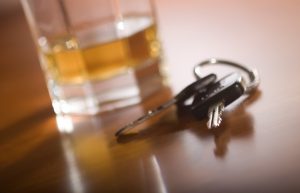
Under current law, it is illegal to drive with a blood alcohol content (BAC) of .08 percent or higher. The enforcement of this alcohol limit results in hundreds of thousands of arrests in California each year. For example, the California Department of Alcohol and Drug Programs reports that there were 203,866 DUI (driving under the influence) arrests made in California in the year 2007. During that same year, there were 42,736 DUI arrests in Los Angeles County alone. The number of DUI arrests could increase significantly if the alcohol limit is reduced to .05 percent.
According to The Los Angeles Times, the National Transportation Safety Board (NTSB) is calling for government incentives to encourage states to lower their drunk driving standard. They believe that a driver with a BAC above .05 percent has impaired abilities and is more likely to cause a fatal crash. Therefore, they recommend lowering the legal limit to help reduce the number of fatal DUI-related crashes.
Alcohol-related traffic fatalities have gone down since Bill Clinton signed legislation 13 years ago requiring states to enforce a .08 percent BAC or risk losing millions in federal highway funds. It is not clear, however, as to what type of cost the NTSB’s new recommendations will have. Their suggestion of lowering the legal limit will certainly prove costly for thousands of drivers in Los Angeles. They also want more high-visibility enforcement and an expanded use of ignition interlock devices to prevent impaired drivers from operating vehicles.
Los Angeles BAC LimitAccording to The Los Angeles Times, the National Transportation Safety Board (NTSB) is calling for government incentives to encourage states to lower their drunk driving standard. They believe that a driver with a BAC above .05 percent has impaired abilities and is more likely to cause a fatal crash. Therefore, they recommend lowering the legal limit to help reduce the number of fatal DUI-related crashes.
Alcohol-related traffic fatalities have gone down since Bill Clinton signed legislation 13 years ago requiring states to enforce a .08 percent BAC or risk losing millions in federal highway funds. It is not clear, however, as to what type of cost the NTSB’s new recommendations will have. Their suggestion of lowering the legal limit will certainly prove costly for thousands of drivers in Los Angeles. They also want more high-visibility enforcement and an expanded use of ignition interlock devices to prevent impaired drivers from operating vehicles.